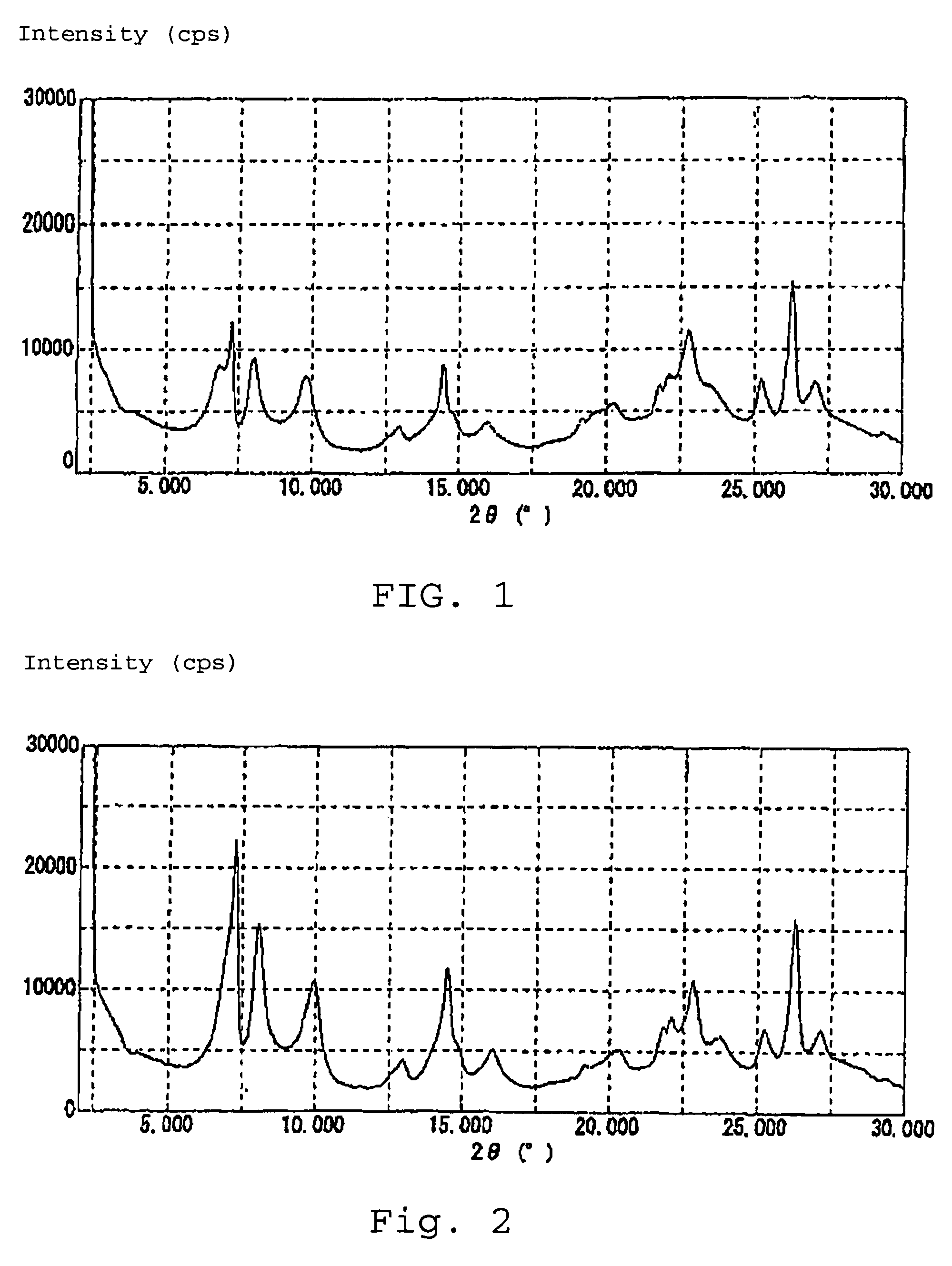Method for producing propylene oxide
a propylene oxide and propylene oxide technology, applied in the field of propylene oxide production, can solve the problems of catalyst cost and have a problem, and achieve the effect of being prepared at inexpensive costs
- Summary
- Abstract
- Description
- Claims
- Application Information
AI Technical Summary
Benefits of technology
Problems solved by technology
Method used
Image
Examples
example 1
[0046]The present invention is described by way of examples. That is, gel comprising 9.1 kg of piperidine, 25.6 kg of pure water, 6.2 kg of boric acid, 0.54 kg of TBOT (tetra-n-butyl orthotitanate) and 4.5 kg of fumed silica (cab-o-sil M7D) was prepared in an autoclave at room temperature under an atmosphere of air while stirred, and aged for 1.5 hours and thereafter tightly closed. The gel was heated-up over 10 hours under stirring, and thereafter retained at a temperature of 170° C. for 168 hours to thereby obtain a suspension by hydrothermal synthesis. The obtained suspension was filtered and thereafter washed with water until the filtrate showed around pH 10. Next, the filter cake was dried at a temperature of 50° C. to obtain white powder, which still contained water. 3.5 L of 13 wt % nitric acid was added to 350 g of the obtained powder and refluxed for 20 hours. Subsequently, the powder was filtered, washed with water to the proximity of neutrality and sufficiently dried at a...
example 2
[0050]The reaction was conducted in a similar manner as in Example 1 by using the catalyst used in Example 1 except for using a solution, prepared by well mixing approximately 36 wt % aqueous H2O2 solution, acetonitrile and pure water to contain H2O2: 5 wt %, water: 47.5 wt %, acetonitrile: 47.5 wt %. As a result, propylene oxide production activity per unit catalyst weight was 0.319 mol·h−1·g−1.
PUM
| Property | Measurement | Unit |
|---|---|---|
| temperature | aaaaa | aaaaa |
| time | aaaaa | aaaaa |
| temperature | aaaaa | aaaaa |
Abstract
Description
Claims
Application Information
 Login to View More
Login to View More - R&D
- Intellectual Property
- Life Sciences
- Materials
- Tech Scout
- Unparalleled Data Quality
- Higher Quality Content
- 60% Fewer Hallucinations
Browse by: Latest US Patents, China's latest patents, Technical Efficacy Thesaurus, Application Domain, Technology Topic, Popular Technical Reports.
© 2025 PatSnap. All rights reserved.Legal|Privacy policy|Modern Slavery Act Transparency Statement|Sitemap|About US| Contact US: help@patsnap.com

